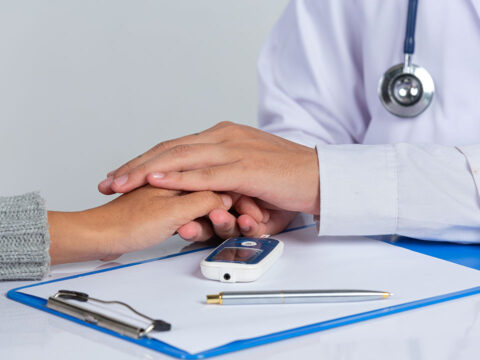
Diabetes Superfoods That You Must Add To Your Diet
August 10, 2021
Can COVID Cause High Blood Sugar Or Diabetes?
August 16, 2021There are different types of diabetes, with each having its own set of risk factors. Let’s look closely at these types of diabetes before we jump into the risks and benefits of testing.
Type 1 Diabetes
You can be affected by type 1 diabetes at any age. However, it is more likely to affect children, teenagers and young adults. Having a sibling or parent with type 1 diabetes increases your risks of having the disease.
Type 2 Diabetes
You are at a greater risk of developing type 2 diabetes if you are overweight, 45 years or older, or have prediabetes. Having a parent or sibling with type 2 diabetes drastically raises your risk of developing type 2 diabetes, too. In addition, if you are physically active less than three times a week, it raises your chances of acquiring diabetes. When it comes to women, having gestational diabetes (diabetes during pregnancy) or having given birth to a baby weighing more than 4 kgs are additional risk factors.
Prediabetes
The chances of developing prediabetes are high if you are overweight, aged 45 or older, have a parent or sibling with type 2 diabetes, and are physically active less than three times each week. Regarding women, gestational diabetes or giving birth to a baby who weighs more than 4 kgs ups their risk of developing prediabetes.
Gestational Diabetes
Women who are overweight, aged 25 or above, or with a family history of type 2 diabetes are more likely to develop gestational diabetes. Other risk factors include having had gestational diabetes during an earlier pregnancy or having given birth to a baby weighing in excess of nine pounds. Moreover, having a hormone disorder known as polycystic ovary syndrome or PCOS ups a woman’s risk of developing gestational diabetes.

Who Should Get Tested For Diabetes?
Diabetes can lead to a wide range of complications. Therefore, early diagnosis is vital. Type 1 diabetes causes sudden occurrence of symptoms, gestational and type 2 diabetes can only be diagnosed through adequate testing. According to the American Diabetes Association or ADA, all adults aged 45 and above must be tested for type 2 diabetes every 3 years. That said, individuals who are overweight may need earlier and far more frequent testing in the presence of any of the risk factors mentioned below:
- Physical inactivity
- A parent or sibling having diabetes
- A known history of blood glucose problems
- High blood pressure
- Cholesterol problems
- Prior case of gestational diabetes
- Giving birth to a baby weighing more than nine pounds
- A known history of vascular disease
- Polycystic ovary syndrome (PCOS)
Your doctor will help you in determining if you need to undergo diabetes diagnosis and tests as well as their frequency.
Diagnostic Tests For Diabetes
When it comes to prediabetes and type 1 and type 2 diabetes, diagnosis of diabetes is critical. Some of the diagnostic tests for diabetes are mentioned below:
Glycated Haemoglobin Test or A1C test
This test does not require you to fast and successfully indicates your average blood glucose levels over the past 2-3 months. It works by measuring the percentage of blood glucose attached to haemoglobin in your blood. An A1C level of 6.5% or above on two distinct tests indicates you have diabetes. A level between 5.7% and 6.4% is an indicator for prediabetes, and a level below 5.7% is considered completely normal.
Random Blood Sugar Test
In this diagnostic test for diabetes, a blood sample will be taken at any random time. Irrespective of when you last consumed food, a blood glucose level exceeding 200 milligrams per deciliter (mg/dL) indicates that you have diabetes.
Fasting Blood Sugar Test
For this test, a blood sample will be taken in the morning after you have fasted overnight. If the blood glucose levels are below 100 mg/dL, it indicates that you do not have diabetes. Levels ranging from 100 mg/dL to 125 mg/dL are an indicator for prediabetes. A level of 126 mg/dL or higher on two distinct tests indicates that you have diabetes.
Oral Glucose Tolerance Test
You need to fast overnight for this test. In the morning, your fasting blood glucose level is measured. After this, you need to consume a sugary liquid, and two blood glucose levels are periodically tested over the next 2 hours. A level of 140 mg/dL is considered normal. A glucose level exceeding 200 mg/dL after 2 hours is an indicator of diabetes. A reading that falls between 140 and 199 mg/dL indicates that you have prediabetes.
The Final Word:
Diabetes tests and diagnosis are crucial parts of a biometric health screening, which gives you a clearer understanding of your overall health numbers, such as heart rate, cholesterol, body fat, and so on. These tests are an essential part of your healthcare and are recommended for every adult every 5 years.




